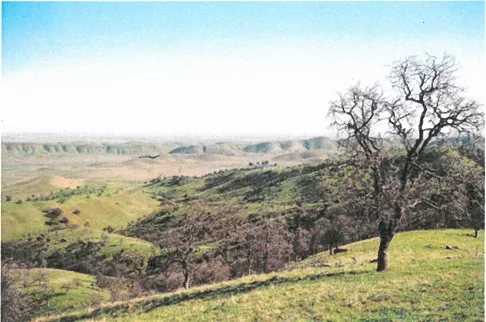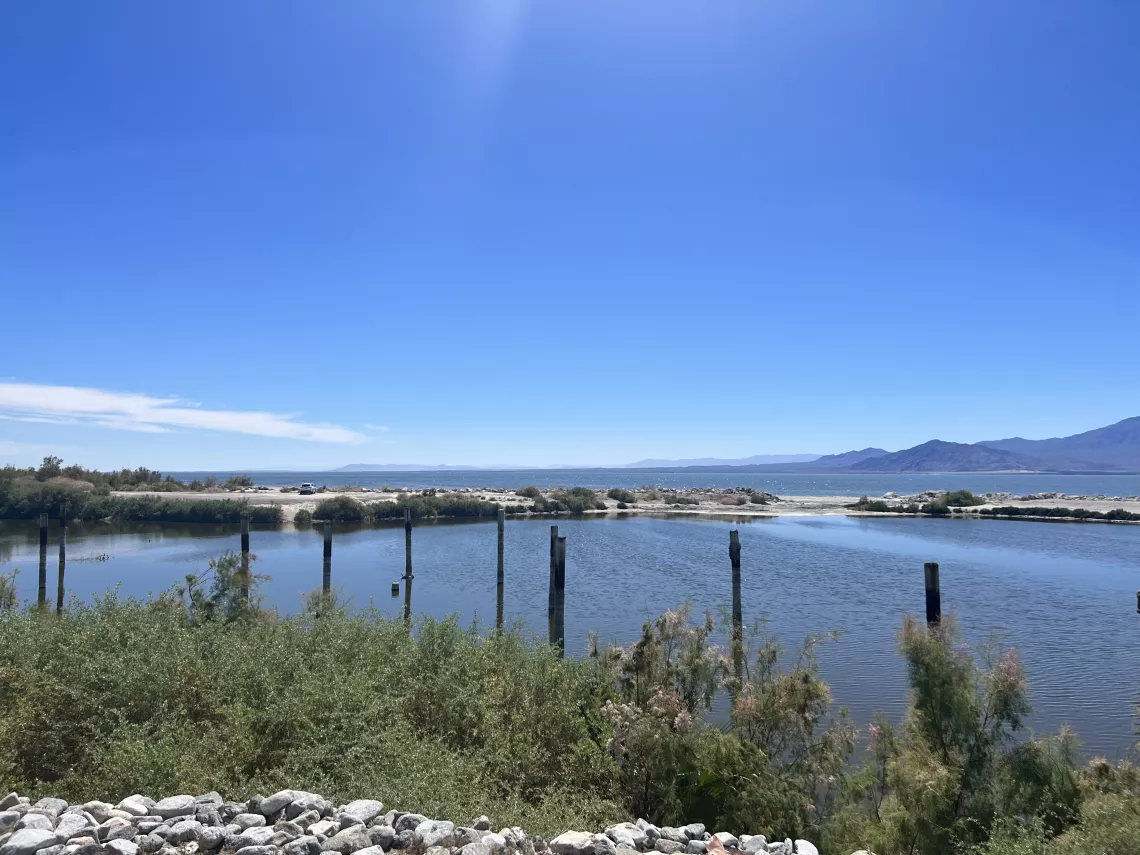
Meet Our New Policy Interns!
Update on the Sites Reservoir Project
Our Continued Efforts at the Salton Sea

Last month, Sierra Club California had two new interns join to further our legislative and regulatory goals. These interns, Alyssa and Jakob, have already been hard at work helping our policy staff research bills and analyze regulations. They’ve directly contributed to our 2023 Priority Bills List!
We wanted to let our supporters know about these great new members of our team, and give you all a chance to learn a little more about them. Jakob is most interested in topics such as industrial decarbonization and clean transportation, while Alyssa is focused on air quality and our 30x30 Campaign. You can see their full bios below, and on our website.
Alyssa Orozco, Policy Intern
Alyssa joined Sierra Club California in March 2023 as a Policy Intern. She researches and analyzes key pieces of environmental legislation, and helps inform Sierra Club California’s policy staff decisions on which bills to support or oppose. Alyssa received her B.A. in English (Writing, Rhetoric, and Literacies) and Global Studies with a Minor in Spanish and Certificate in Human Rights from Arizona State University. Alyssa enjoys traveling, going to concerts, and hiking.
Jakob Evans, Policy Intern
Jakob joined Sierra Club California in March 2023 as a Policy Intern. He works closely with Sierra Club California’s policy staff to analyze and research specific environmental bills and policies. Previously, Jakob worked as a Policy Fellow at Brightline Defense, supporting Offshore Wind development in California. In his spare time, Jakob loves to read, cook, and take too many pictures of his cat.
Update on the Sites Reservoir Project
By Molly Culton and Caty Wagner

Late December and early January brought an onslaught of nine atmospheric rivers to California, which claimed several lives, and caused severe flooding, power outages, damage to infrastructure, and threatened the safety of several communities.
The series of storms highlights an urgent need for California to update and maintain its existing water infrastructure to protect public safety and ensure resiliency. But some have used these storms as more rationale for the state to invest and build more above-ground storage projects. One of those projects is Sites Reservoir.
The Sites Reservoir project is the proposed construction and operation of a 1.5 million acre feet (MAF) capacity offstream water storage facility. The project would be located in the Antelope Valley of Colusa County in northern California, near the small town of Maxwell, and would flood a 13,200 acre area that currently contains valuable wetland and oak woodland habitat. The area is home to numerous endangered and threatened species, including federally protected golden eagles.
The total cost of construction is estimated to be minimum $3.9 billion, with over $816 million being paid for by state taxpayers, even though water deliveries would primarily benefit large water wholesalers, with the largest share (25% of the non-state share of deliveries) directed to the Metropolitan Water District (MWD). MWD’s water plan claims it has a surplus of water, even during drought. This project will not benefit ratepayers, and instead will likely be sold to increase profits.
The project site sits near four earthquake faults: Bartlett Springs, Great Valley, Corning, and the Lake Thrust faults. The act of filling reservoirs alone can create seismic activity.
On a March 2023 tour with Metropolitan Water District and the Sites Authority, Sierra Club California staff learned that Sites has many potential contractors at this point. The federal government wanted a share of 16%, but the Sites Authority could only offer them 9%. Proponents are promoting the idea that Sites is a stand-alone project and not reliant on the Delta Conveyance project, although former MWD general manager Jeff Kightlinger and other contractors have said that they are dependent on one another. Sierra Club CA was fortunate to tour the location of the proposed Sites Reservoir project last year with other environmentalist groups. Read more about our observations from our 2022 tour here.
This project is not the solution to California’s water management problem. California needs solutions that will address our water resiliency needs in the long term. Urban stormwater capture in a dry year could add 580,000 acre-feet (AF) of water. That number jumps to 3 million AF in wet years. Combined with improving groundwater storage and management, this has the potential to respond to flood conditions and store water for use in naturally-occurring aquifers for use in dry periods. Agricultural and urban water efficiency measures and urban water recycling could contribute to additional savings and new supply of several million AF annually.
The Final Environmental Impact Report/Environmental Impact Statement (EIR/EIS) for Sites is expected to be released in May/June 2023. Stay tuned for communications from us about how you can send in public comments and oppose the environmentally destructive Sites Reservoir EIR/EIS project.
Our Continued Efforts at the Salton Sea

Sierra Club’s efforts to solve the ecological and public health crisis at the Salton Sea and the communities that rely on it continue to be a top priority for all levels of the organization. Sierra Club California, in partnership with the San Gorgonio and San Diego chapters, and the national Our Wild America campaign, has a robust campaign in which we work with key allies to hold the state accountable for their part in harming the Salton Sea.
The Salton Sea is California’s largest lake, and entire ecosystems and communities rely on it. Because of reduced water flows and deteriorating water quality, the Sea is drying up and creating an environmental and public health crisis. These problems are also being exacerbated due to climate change.
The drying of the Salton Sea is exposing lakebed dust that is full of harmful heavy metals and pesticide residue, which can cause catastrophic health problems. The communities who live by the Sea – almost 650,000 people in the region – experience higher rates of respiratory issues, cardiac disease, and asthma. The Salton Sea is also crucial to the survival of more than 400 species of migratory birds. As the Sea dries up, their habitat is rapidly disappearing.
Local groups are leading the charge to educate the communities about the importance of the Sea. Last week, I had an opportunity to attend a community science event with Alianza Coachella Valley and other professional environmental researchers at the Sea to better understand contamination in the Salton Sea and its effects on nearby communities.
Participants in the Salton Sea Community Science Project will be collecting water samples and testing them on-site for contaminants such as sulfur. The project, which began in 2021, is made up of residents from communities in the Eastern Coachella Valley, including high school and college students. Participants learn scientific inquiry and data analysis techniques while assisting in real research into the rapidly changing conditions at the Salton Sea. This research, shockingly, is not being done by the state of California or any other government entity.
Last month the state released their Annual Report on the Salton Sea Management Program, which lays out the California Natural Resource Agency’s progress to-date in complying with the state’s mandate to restore habitat and improve public health at the Sea. Sierra Club California and our allies are still analyzing the report. The report will be presented to the State Water Board in May, and Sierra Club volunteers and staff, and our allies, will be in attendance to call on the state to take further action.
Be on the lookout for opportunities to engage in our work at the Salton Sea in the coming weeks. In the meantime, sign up here to be part of our efforts!
Follow Us:
  |
Thank you for being a part of our work! Consider making a monthly donation. You may securely donate online or by sending a check to Sierra Club California at 909 12th Street, Suite 202, Sacramento, CA 95814.
